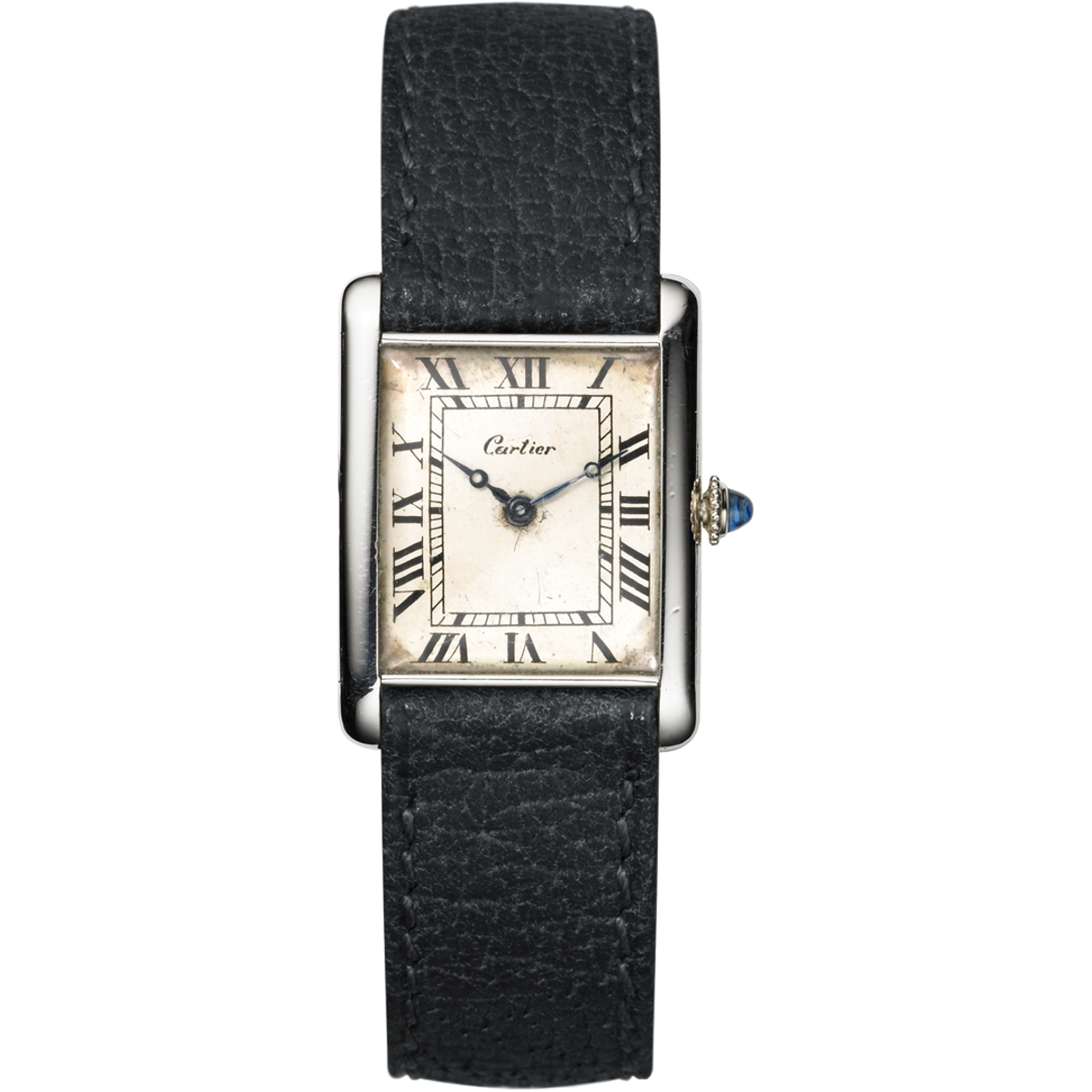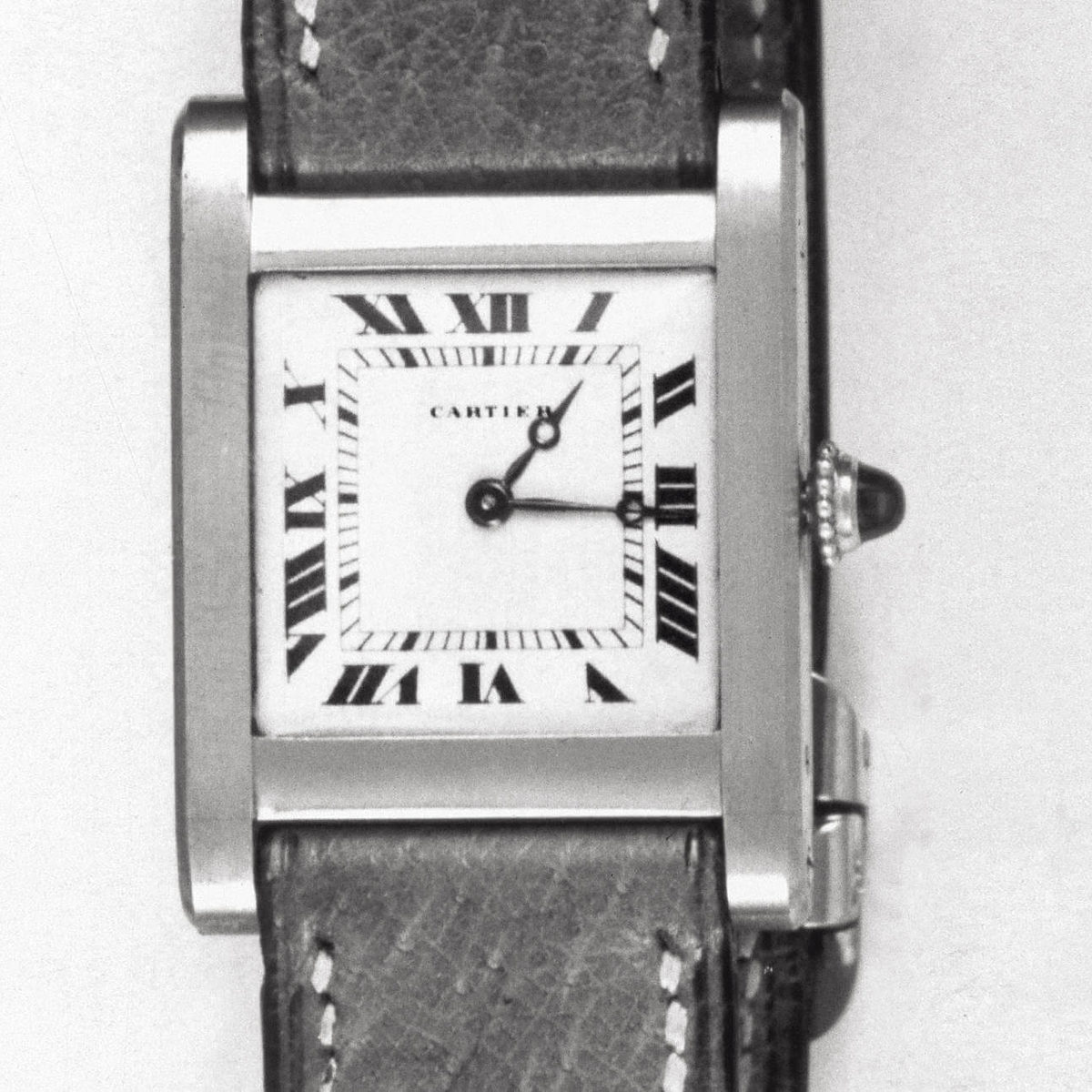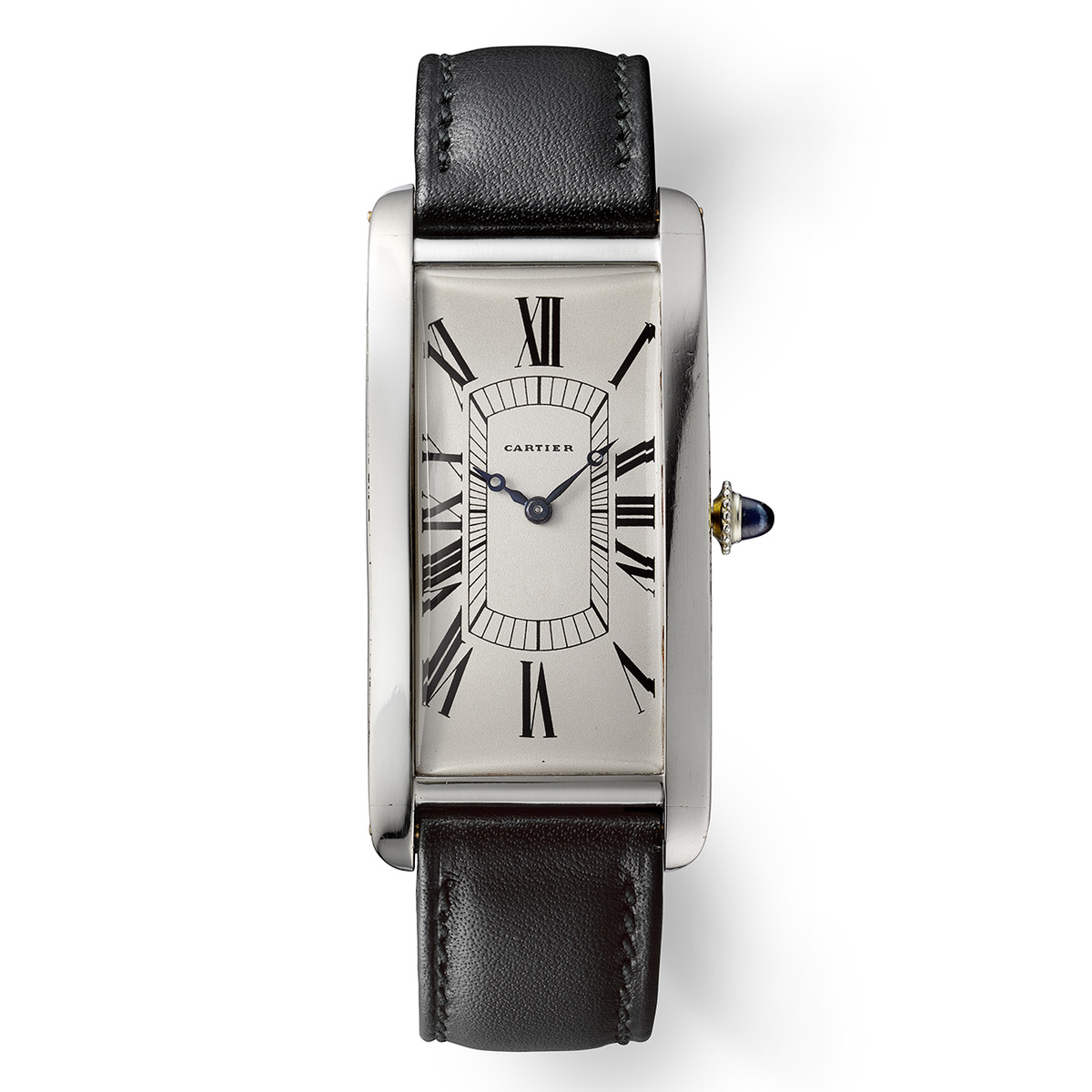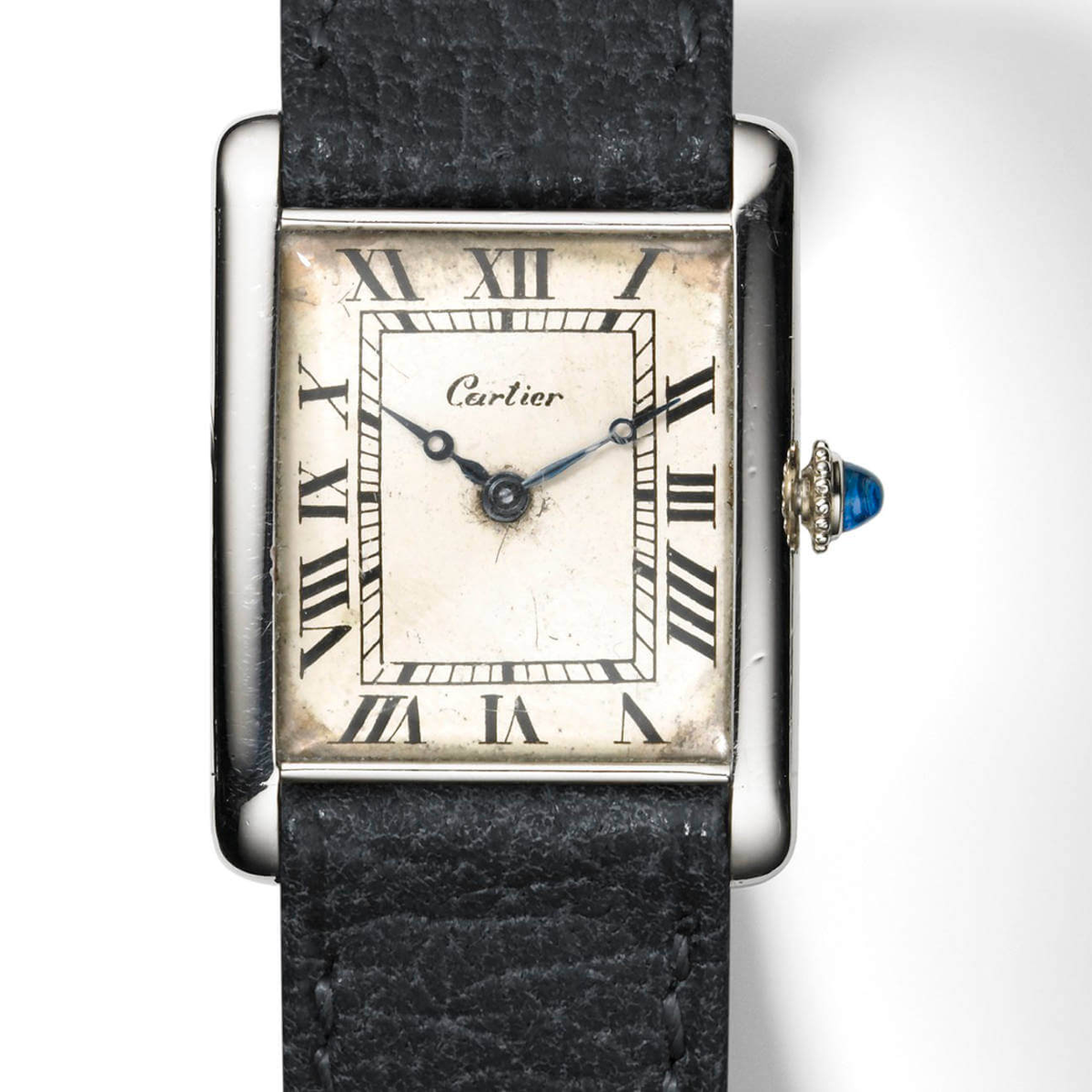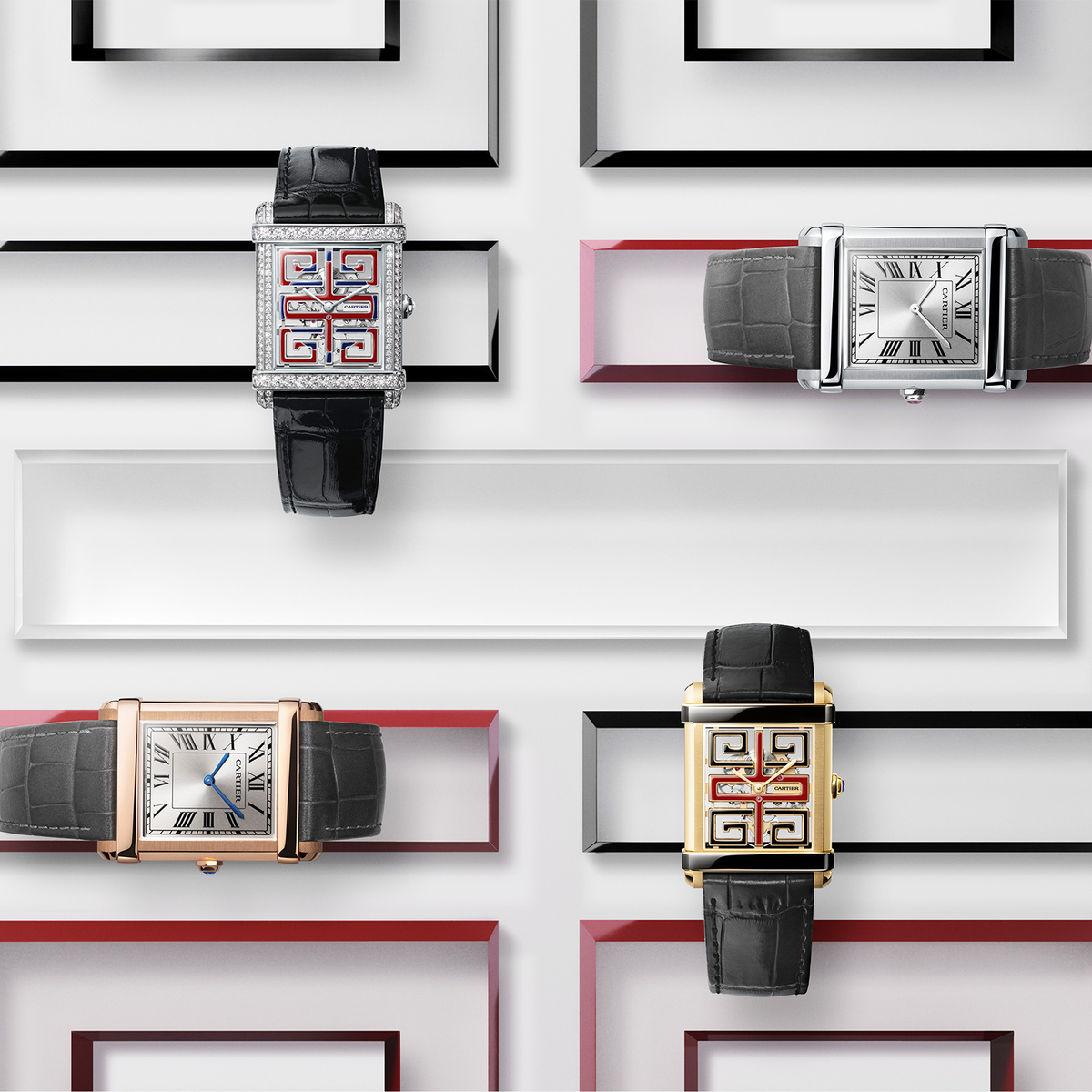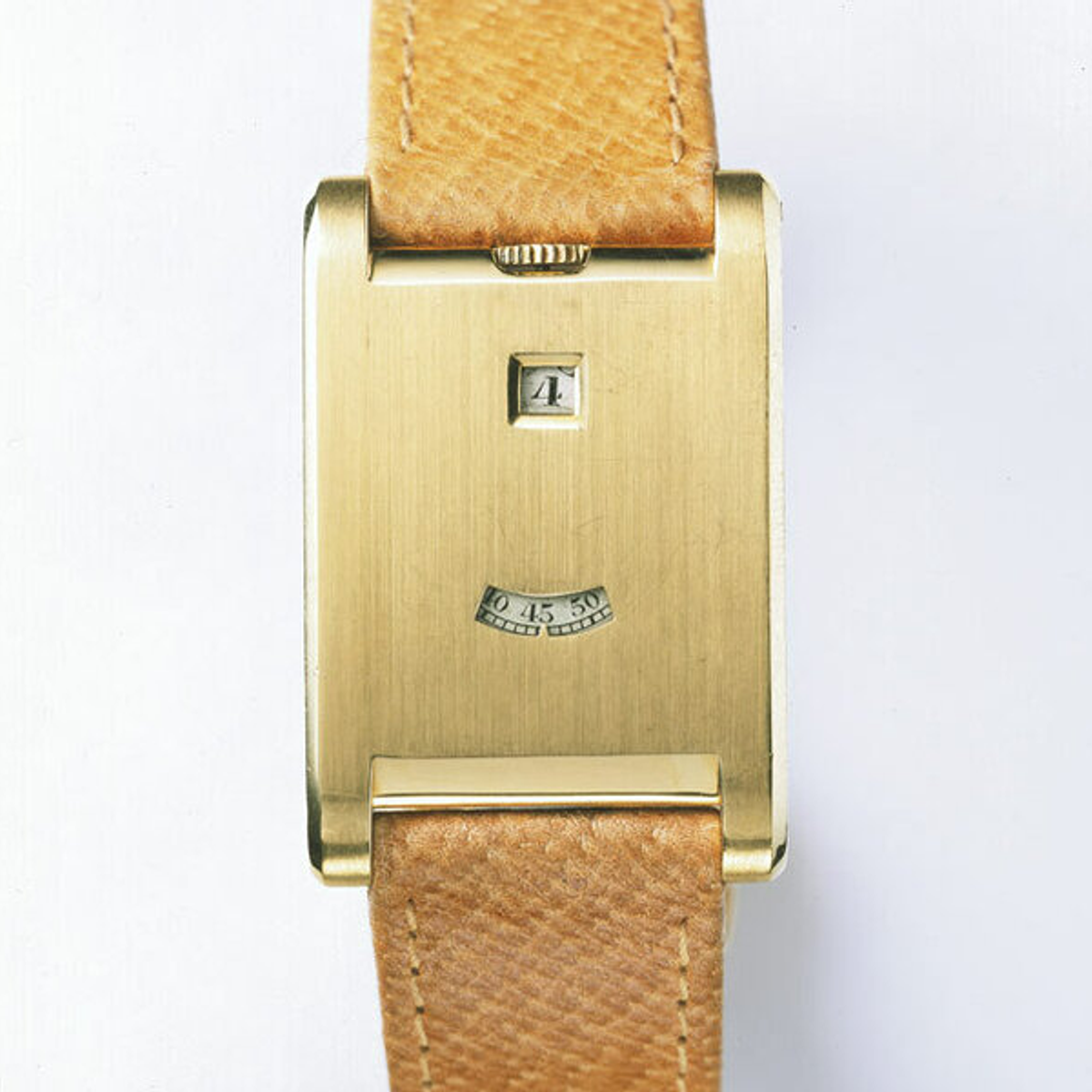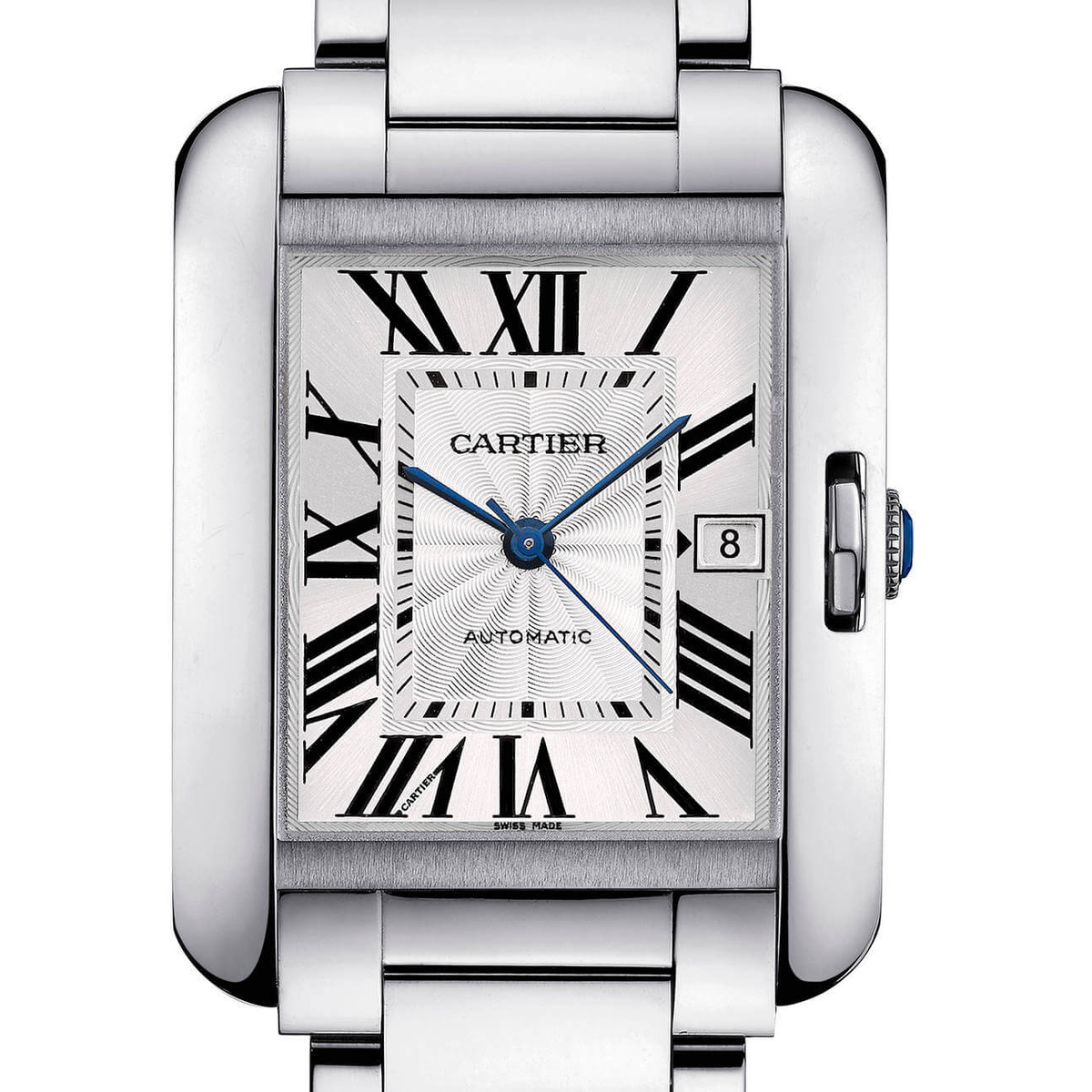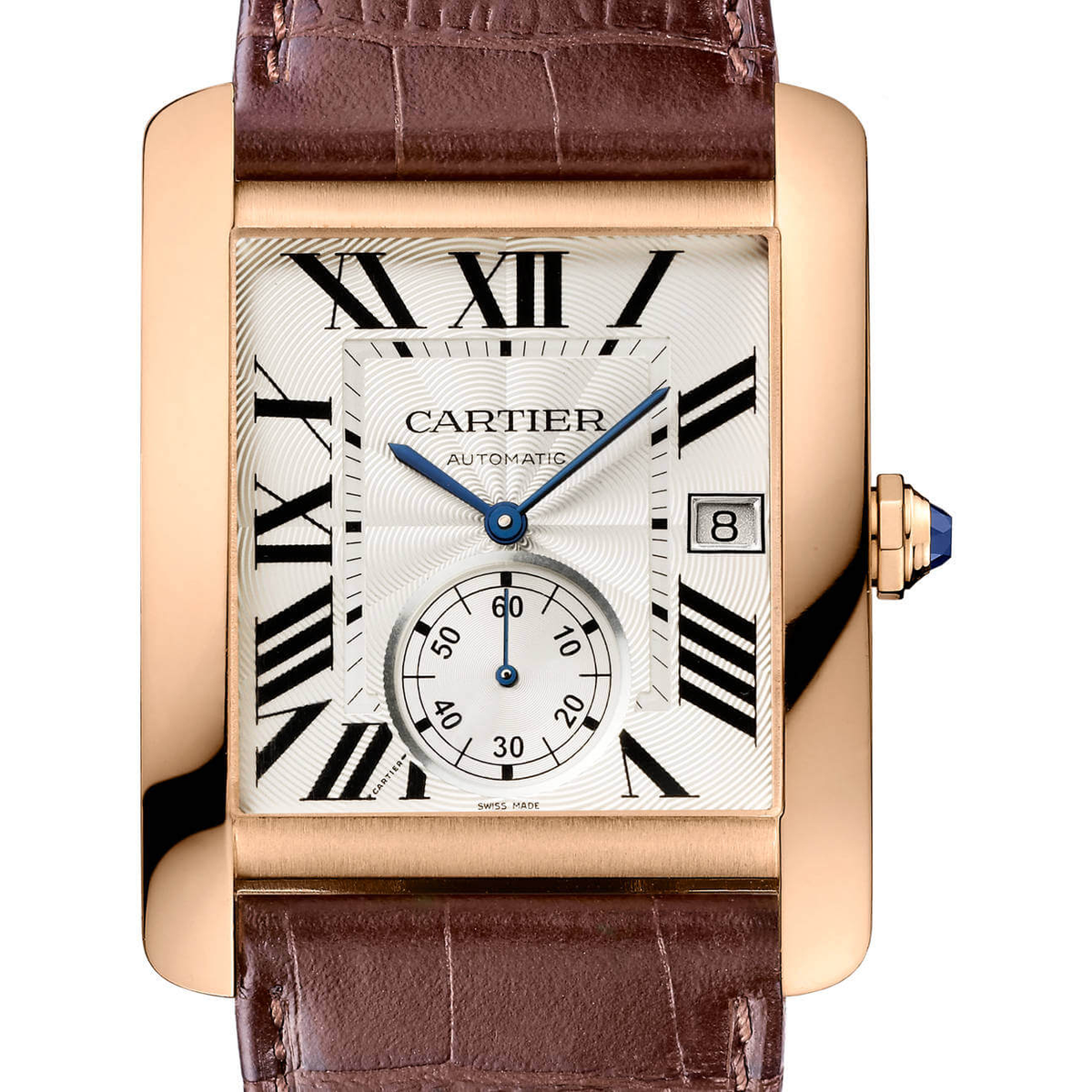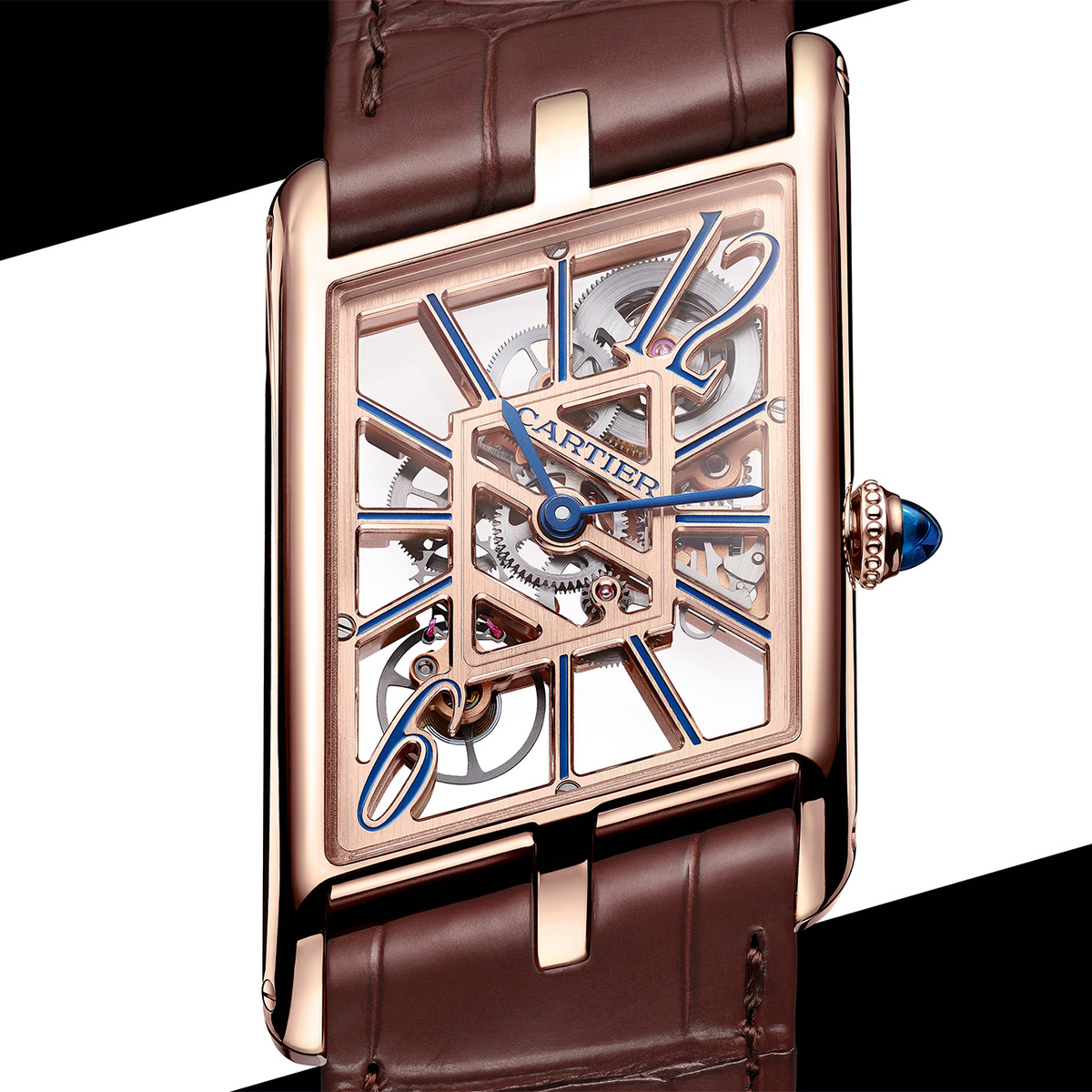Throughout the twentieth century, the Tank watch repeatedly met particular expectations, dictated by the market or by trends.
Launch Year
1917
Functions
hours, minutes
Movement
mechanical manual-winding
Distinctive features
square case inspired by a tank’s cockpit, Roman numerals, railway-type minutes track
The Tank came about in 1917 as a prototype that was presented after the war to General John Pershing, commander of the American Expeditionary Force in Europe. Commercialised in 1919, it featured a square case – like a tank’s cockpit – with vertical parallel flanks on either side – representing caterpillar tracks – that were cleverly designed to accommodate the wristband. Louis Cartier had introduced a completely new creation that already featured the characteristics that can be found in most Cartier watches today: Roman numerals for hours, railway-type minutes track, blue steel hands and a sapphire cabochon on the crown.
In the early 1920s the shape of the Tank evolved, becoming more rectangular, notably through the Tank Cintrée with its curved case (1921); the Tank L.C. or Louis Cartier (1922); and the elongated Tank Allongée (1922), which would inspire a number of feminine variations. From then on, the watch appeared in numerous versions under various names, repeatedly oscillating between square and rectangular shapes.
Throughout the 20th century, the Tank watch repeatedly met particular expectations, dictated by the market or by trends. The Tank Chinoise was created in 1922 in response to the Western world’s fascination with the East and particularly China. The Tank à Guichets was launched in 1928 when the market showed interest in watches with aperture-type digital displays, which were considered more modern. The Tank Réversible was created in 1932, following requests among customers for a watch that could be turned over to protect the dial or to display a personalised engraving. It was based on a Cartier-Jaeger patent and would serve as inspiration for the Tank Basculante presented in 1992, a rare piece of which only 416 were produced, now highly sought-after by collectors. As for the Tank Must, created in 1977, it was part of the deliberately affordable Must de Cartier collection.
Today’s Tank collection is divided into five model types. The Tank Louis Cartier is faithful to the 1922 historical model; a shining example of what would come to be known as "Art Deco style". The Cintrée, launched a year earlier, gave rise, in 1989, to the Tank Américaine, which is arched like the original but squarer and sturdier. This was the first Cartier watch with a case that is both curved and water-resistant. One of the watchmaker-jeweller’s most innovative developments came with the 1996 Tank Française. Designed as a seamless whole, generally paired with a metal bracelet, this line features a curved case with bevel-tipped vertical flanks.
The collection welcomed the Tank Anglaise in 2012, a pared-down model whose distinguishing feature is to integrate the crown into the right-hand vertical flank, while 2013 saw the introduction of the Tank MC (Manufacture Cartier). It launched with Cartier’s first in-house made movement, the self-winding calibre MC 1904 dating from 2010, in a resolutely masculine case with a sapphire back.
In 2020 Cartier revisited the Tank Asymétrique as part of the Cartier Privé collection that spotlights the brand’s legendary designs. First seen in 1936, it boasts an unmistakable slanted case and a dial rotated by 30 degrees. The following year marked the centennial of the Tank Cintrée, duly celebrated with a limited edition. Also in 2021, a new version of the Tank Louis Cartier sported a range of coloured dials while a redesigned Tank Must innovated with a photovoltaic movement and a botanical leather strap. 2022 was another centenary year, this time for the Tank Chinoise which took its turn in the Cartier Privé collection. Proposed in platinum, rose gold or yellow gold, it is fitted with Cartier’s thinnest self-winding movement, calibre 430 MC. A limited-edition skeleton execution (9627 MC) in yellow gold or platinum completes the range.
Key Characteristics
- Square watch created in 1917 and interpreted throughout the 20th century in various guises such as rectangular, reversible and inward-curving
